Despite Sweden's goals to arm itself with domestic designs, foreign tanks in the Swedish army were not a rare sight. In cases when their industry was too slow or designers put out unsatisfactory results, the Swedish military made up the shortfall with foreign purchases. Recall that the Strv m/37, Sweden's most numerous tank at the start of WWII, was actually the CKD AH-IV-Sv tankette. Later, the Swedes acquired the Strv m/41, a licensed copy of another Czechoslovak vehicle, the LT vz. 38. A similar story happened again after WWII. Tired of waiting while domestic designers, the military purchased British Centurion tanks, which ended up being the most numerous tanks with a classical layout in the Swedish post-war army.
Waiting for EMIL
The Swedish military was largely responsible for the difficult situation it faced in the early 50s. In 1943, work was initiated to come up with a tank capable of facing the Soviet T-34. The requirements changed several times, as did the projects built to meet them. It started with the 28 ton Landsverk Pricken. It was replaced by the 30 ton LS 46, then the 25 ton Landsverk Leo, which the military also rejected. The Landsverk Lansen was designed based on the Leo. None of the aforementioned vehicles even made it to the prototype stage. The most that Lansdverk did was produce full seized models of the Lansen in various variants for foreign buyers.
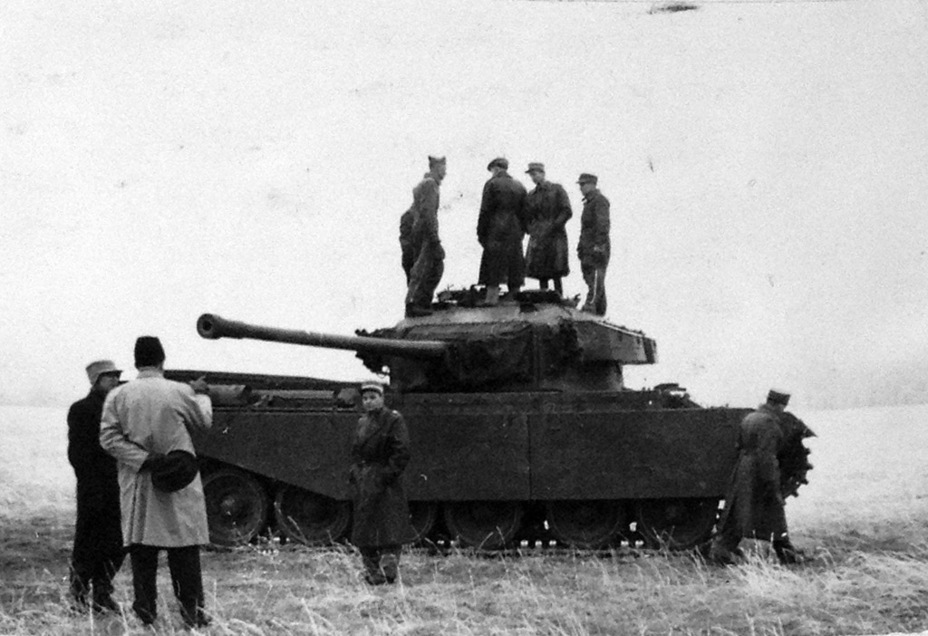
In March of 1950, KATF (Kungliga Arméförvaltningens Tygavdelning, Royal Army Ordnance Department) learned of the IS-3 tank that was in use by the Soviet army. An analysis of its protection showed that Swedish designs were hopelessly obsolete. This meant that serious changes must be made to the new tank's design once again.
KATF prepared specifications for a new tank, armed with a 105 mm gun, by November 9th, 1950. The tank differed little from previous projects. At a mass of 25 tons, it had to have a power to weight ratio of 18 hp/ton. The Strv m/42 was considered as a chassis. However, this time, the Swedish army decided to have a backup plan. A search for a suitable tank was also started abroad.
The Swedes had little choice in 1950. Wartime tanks were not considered, since they were obsolete. This limited the candidates to two tanks. One was the American M26 Pershing tank and its successor, the M46 Patton. The 44 ton tank had a 90 mm gun, with similar characteristics to the German 88 mm Flak 18. This wasn't bad for the end of WWII, but no longer enough to deal with the IS-3. The M46 had better mobility and top speed than the M26 due to a new engine, but the tank was rapidly becoming obsolete.
The second candidate was the British Centurion tank. This was a real breakthrough for the British tank industry, who fell behind in the tank race in the end of WWII. Towards the very end of the war, the British managed to build a tank that combined good armour and a powerful gun. In 1949, the Centurion Mk.3 arrived on the scene with an 84 mm Ordnance QF 20- pdr Tk Mk.I. This weapon drastically increased the tank's effectiveness.
The British tank had its drawbacks. It was bigger and heavier than the M46, and its top speed was only 35 kph. In addition, the front hull armour was only 76 mm thick, which was not enough for the early 1950s, despite the sharp slope of the hull.
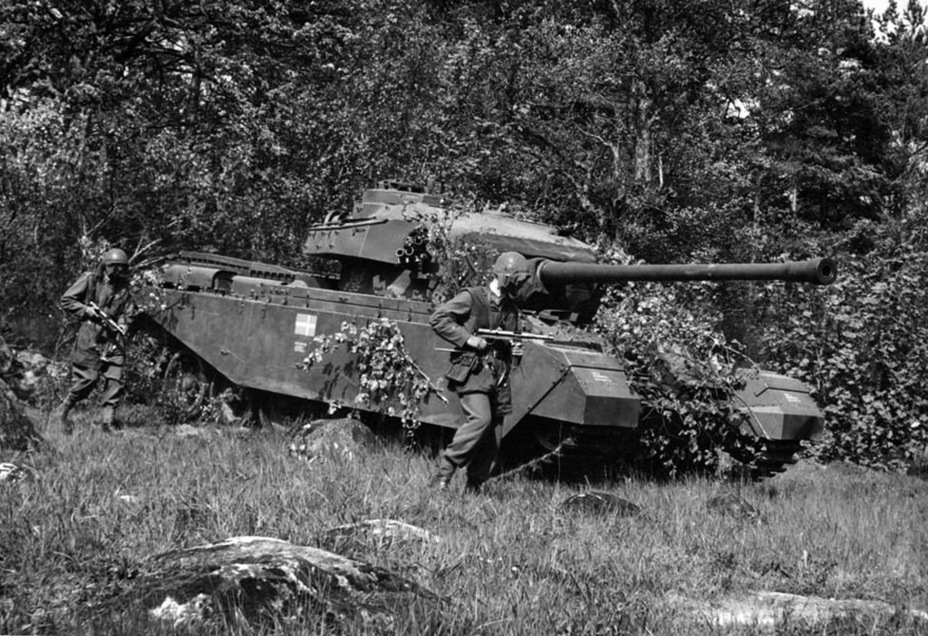
The Centurion Mk.3 was chosen. However, it turned out that the British were not ready for export deliveries in 1950. A response to the Swedish request stated that the tanks should not be expected before 1958. The start of the Korean War in the summer of 1950 triggered a new leap in the arms race. The USA and Great Britain had no time for Sweden.
Sweden began getting closer to France starting in late 1950. In January of 1951, the KATF received information about the French AMX M4 medium tank, which later became the AMX 50. The Swedes became acquainted with another French tank in July of that year: the AMX 13. Both of these tanks had a significant influence on Swedish tank building. After studying the French experience, the prospective Swedish tank turned into the EMIL in September of 1951. A year later, it was seriously redesigned. The mass grew from 28 tons to 41.8, the 120 mm gun was discarded for 105 and 150 mm options, and the tank increased in size.
A sample AMX 13 arrived in Sweden in April of 1952, and trials began. The French vehicle was seriously considered as a new tank for the Swedish army. Negotiations for an order of 300 tanks began.
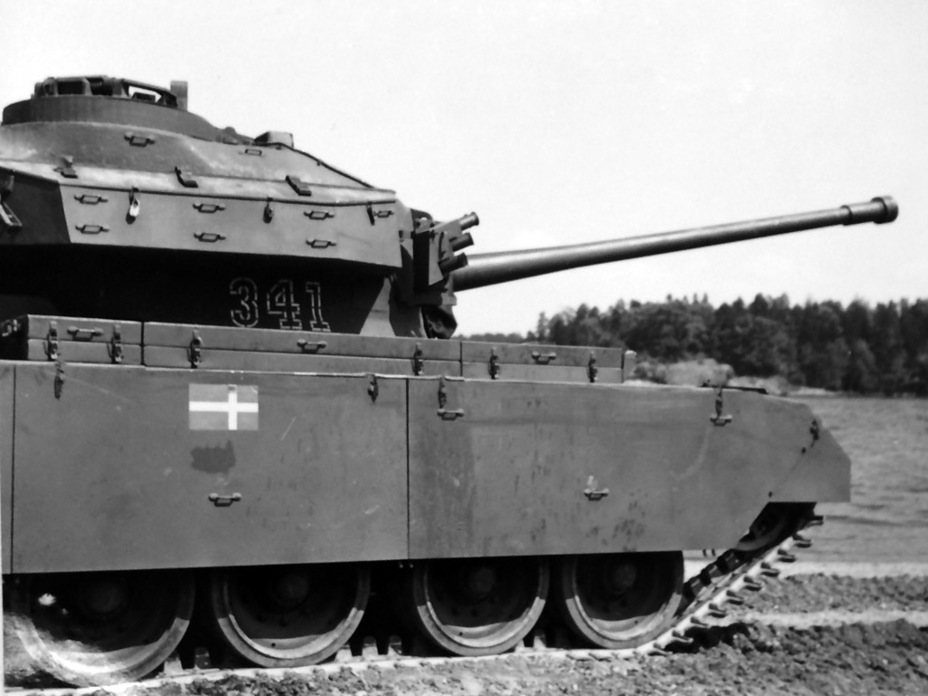
It's possible that Swedish tank building could continue along this «French path», but the situation changed in late 1952. On December 5th, a letter arrived from the Swedish embassy in London, stating that the British were ready to sell 80 Centurion Mk.3 tanks. A fully equipped vehicle cost 50,000 pounds Sterling. This sum also included two years of service. If the deal was made in January of 1953, the order would be fulfilled in 1953-54. In January of 1953, KATF received detailed technical information on the British tank. In November-December of 1952, Swedish specialists visited Switzerland, where they had a chance to examine a Centurion Mk.3.
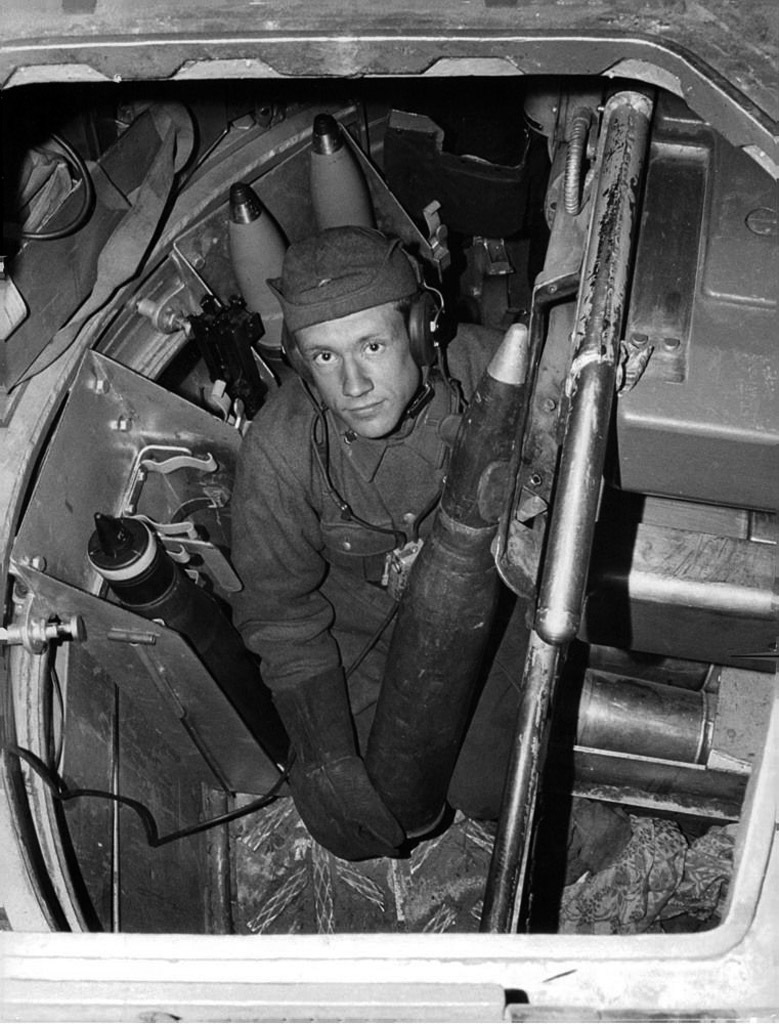
Serious changes had to be made to tank purchase plans. As of January 1953, the Swedish army was planning on buying 300 AMX 13s at a cost of 700,000 Swedish kroner per tank. As for the British tank, its cost in Swedish currency was 845,000 kroner.
The Centurion Mk.3 was a more tempting variant. These tanks showed themselves well in Korea. As for the AMX 13, the Swedes were disappointed. General Carl August Ehrensvärd had the following opinion about the tank: a good tank, but not for Sweden. The choice of Sweden's commanders finally swayed towards the British tank. This was meant to be a temporary replacement for the domestic EMIL tank.
KRV solution
According to the initial deal, the first six Centurion Mk.3 tanks arrived in Sweden in April of 1953. The delivery of the rest was stretched out until December 31st, 1954. In reality the first tanks arrived at Landskrona only on May 2nd. The tanks were loaded on a train and sent to Hassleholm, where the P 2 tank regiment relocated to in 1947. The tanks, indexed Strv 81 on the Swedish army, were studied here. The number 8 indicated the gun's caliber in centimeters, and the number 1 meant that it was the first such tank in the Swedish army.
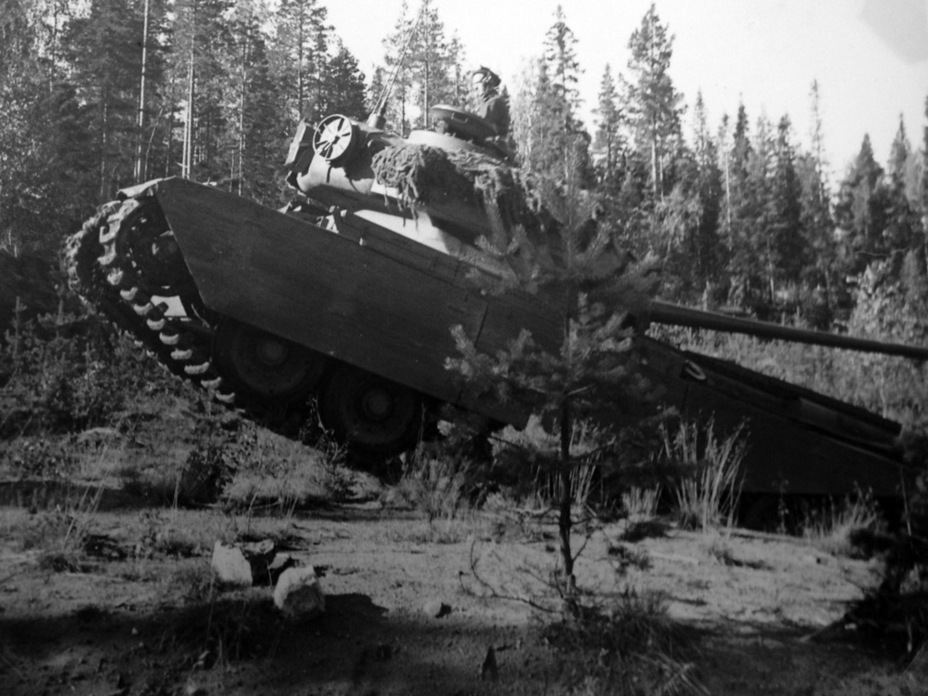
The Centurion was different from what the Swedish military expected to get. These tanks could be called old-fashioned. The British returned to Sidney Horstmann's bogey suspension. This suspension was first used in the late 1920s on Vickers tanks, and looked rather archaic on a post-war vehicle. On the other hand, the suspension didn't occupy space inside the tank, and a damaged bogey could easily be removed. The widely known E-50 and E-75 tanks also had similar suspensions.
The tank's large mass, 50 tons, was a serious drawback. Meanwhile, the Centurion was officially still a medium tank.
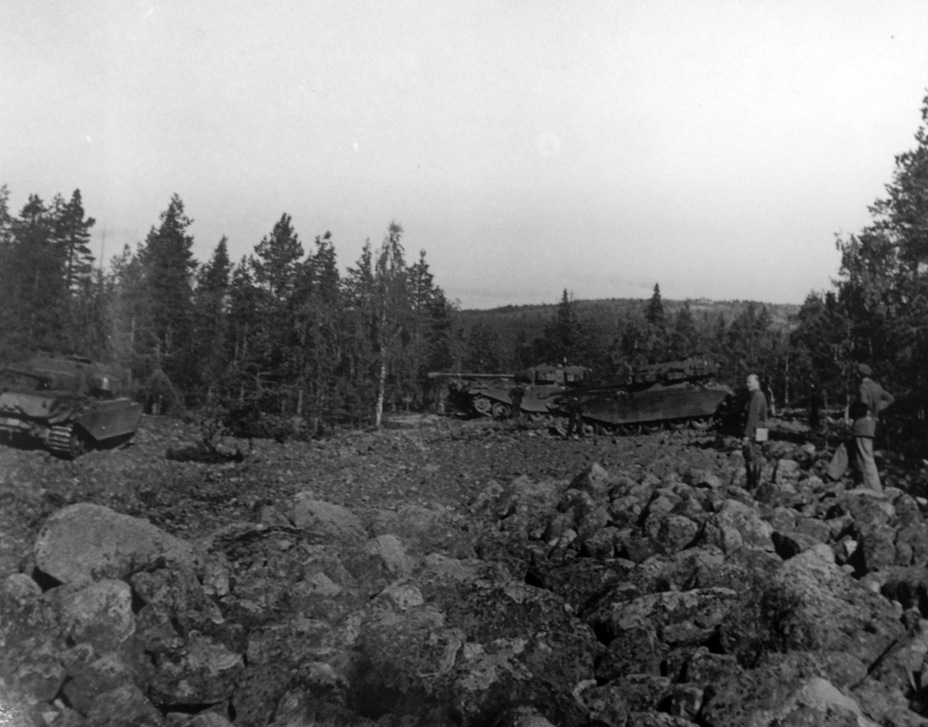
There was also a heap of advantages that outweighed the drawbacks. One of the Swedish requirements was crew comfort, and there was no shortage of it here. The Centurion was a massive leap forward for British tank building when it came to comfort. Compared to the Cromwell and the Comet, the driver's station was like a starship cabin. The seat could be lifted on the march, giving the driver excellent visibility. In case of bad weather, there was a cover that could be raised over the hatch to protect the driver from precipitation. The driver's compartment was well thought out and organized.
The fighting compartment was also radically changed. This was especially true for the loader, which had enough space to dance. The large turret ring diameter (1880 mm) and thoroughly thought out fighting compartment layout helped here. A more powerful gun could later fit into this same space without loss of comfort for the crew. Even the stock 84 mm gun was a decent option.
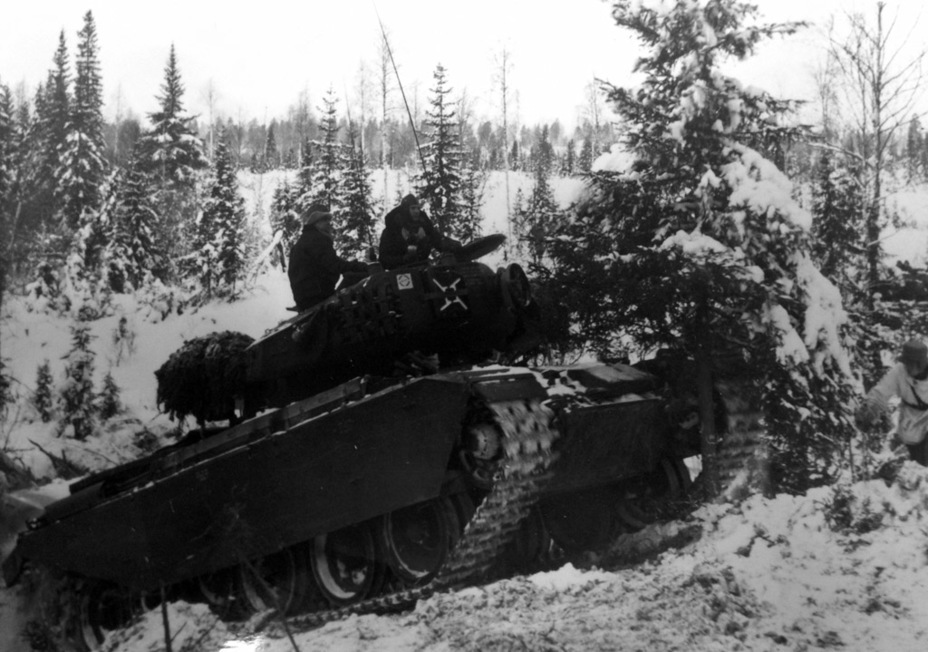
The British fulfilled their end of the bargain ahead of schedule. The last of the 80 Centurions arrived in Sweden in the fall of 1954. Full scale tactical exercises with Strv 81 tanks began in June of 1954, which made use of P 2's tanks. Exercises continued into the fall, where the tanks were used in difficult scenarios. They were driven through the swamps, through the forests, and even through snow. It turned out that the low top speed was made up for by good mobility in Sweden's difficult terrain. It was clear that the military bet on the right horse.
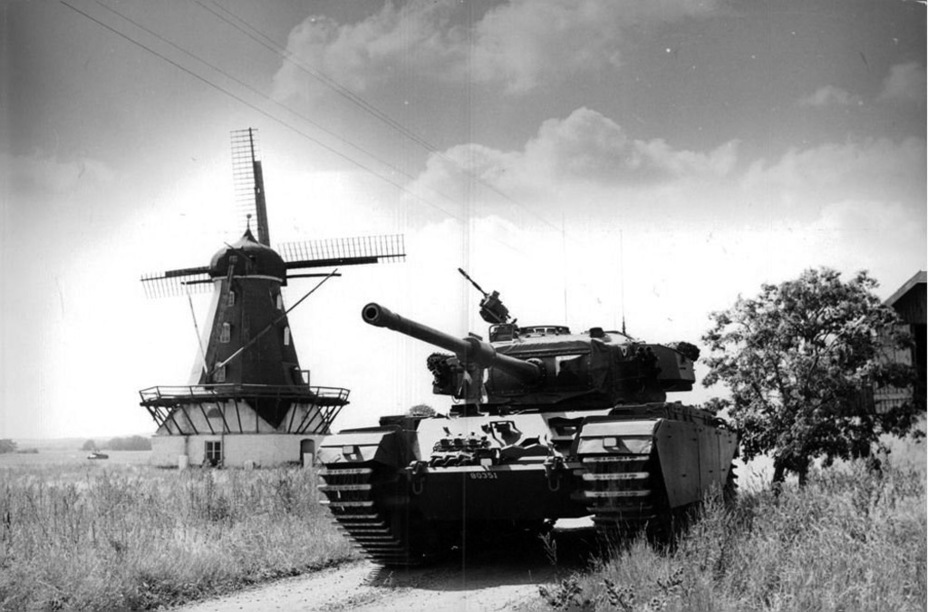
The successful trials opened the way for further orders. Due to the failure of the EMIL project, which changed its name to KRV in 1956, these were desperately needed. The development was behind schedule, but serious issues with the turret and armament of the prospective vehicle were already apparent.
In 1955, the Swedish army ordered another 160 Centurion Mk.3 tanks. The tanks that were delivered differed from tanks of the first batch. The biggest external change was in the 20-pounder gun. The counterweight disappeared from the tip of the gun, and a fume extractor was added, which reduced the amount of fumes that reentered the turret after firing. Overall, 240 British tanks were purchased. In addition, 13 Centurion ARV vehicles were ordered, indexed Bärgningsbandvagn 81 A, or Bgbv 81 A.
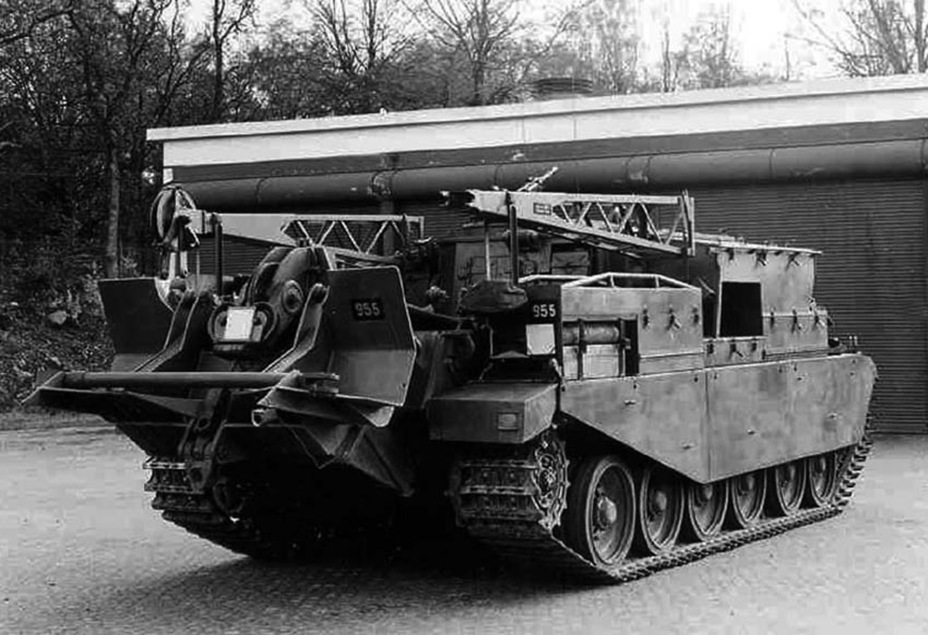
The appearance of British tanks allowed for a massive rearmament of the Swedish army. The Strv 81 replaced the hopelessly obsolete Strv m/42. These tanks were modernized into Strv 74, which in turn replaced Landsverk L-60 and Strv m/41 tanks. The Strv 81s slowly changed their appearance. Initially, they were only used as the British delivered them. Later, they received Swedish radios, and started changing externally. The front and rear mudguards received holders for tactical symbols, and special rests were added to the front plate, which served as parking brakes. The lights also changed. Finally, a mount for the KSP m/39C machinegun was added to the commander's cupola.
The Swedish military was at a crossroads in 1958. The KRV prototype was successfully going through trials, but it still had no turret or armament. On May 2nd, a meeting was held where the issues of rearmament for 1958-1966 was raised. In addition to continuing the work on the KRV, the issue of either purchasing or licensing tanks from Great Britain, USA, or Germany was raised. Another replacement for the KRV was proposed: the Strv S.
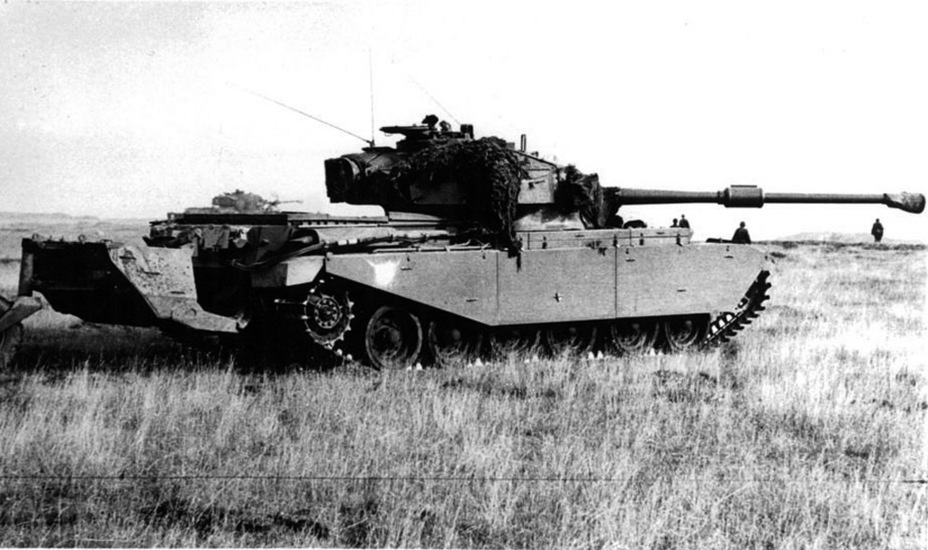
The KATF was unwilling to close the KRV program, since so many resourced were already spent on it. Meanwhile, news of a new version of the Centurion came from Britain. On November 6th, 1958, the military received information on new variants available for purchase. The Mk.8 and Mk.10 were offered. The price difference was minimal, which could not be said about the characteristics.
For starters, the Centurion Mk.10 received an additional armour plate on the front of the hull and a new gun mantlet. The tank received a more powerful 105 mm L7 gun. To be fair, the modernized Centurion Mk.8 offered the same armament, but it's not hard to see why Sweden considered the Centurion Mk.10 for purchase.
The British offered tanks in three batches at a cost of 50,000 pounds Sterling each. The first batch of 75 tanks could be delivered starting in March of 1960, the second batch of 100 could start shipping in March of 1961, and shipment of the final batch of 140 vehicles would begin in August f 1961. Centurion ARV Mk.2 recovery tanks on the Centurion Mk.7 chassis were offered at a cost of 51,200 pounds Sterling (plus 401 pounds for the crane). For 52,000 pounds, the Swedes could purchase a Centurion Bridgelayer.
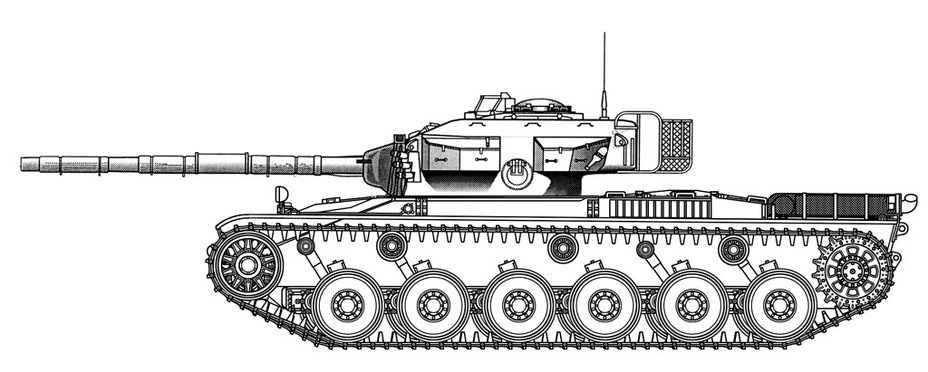
The Swedes wavered. On one hand, it was clear that British tanks, expensive at first, were a rational option. On the other hand, their mobility did not improve, while the KRV chassis was quite good. The last attempt to save the KRV involved combining the Swedish chassis and the Centurion Mk.10 turret. Work on this vehicle, indexed Strv K, began in mid-June of 1959. The turret ring would have to be modified, since it was bigger on the KRV. This could have been an interesting hybrid, with good armour, high mobility, and a powerful weapon. It's possible that the Swedes could have installed a 62 caliber long cannon, the kind that eventually ended up in the Strv S.
After weighing the pros and cons, the Swedish military rejected the idea. It was simpler to just buy new tanks than to make a hybrid, which would cost at least 1.5 times as much as a Centurion Mk.10. Work on the Strv S was in full swing, so there was still an option of a domestic vehicle with high mobility, a powerful gun, and an autoloader.
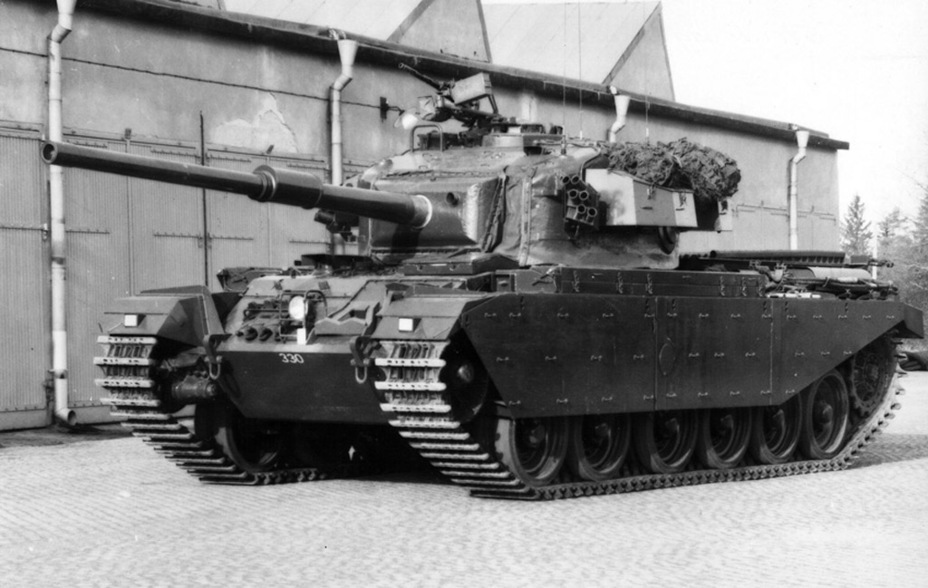
The final shipments of Centurion Mk.10 tanks numbered less than the British initially proposed. In total, Sweden received 110 tanks indexed Strv 101 (first tank with a 10 cm gun) in 1959-60. The Strv 101 was immediately modified in the same way as the Strv 81. The lights were changed, reflectors and parking brakes were added, and a mount for a Swedish machinegun was installed. Sweden also bought three Centurion ARV Mk.2 vehicles, indexed Bgbv 81 B.
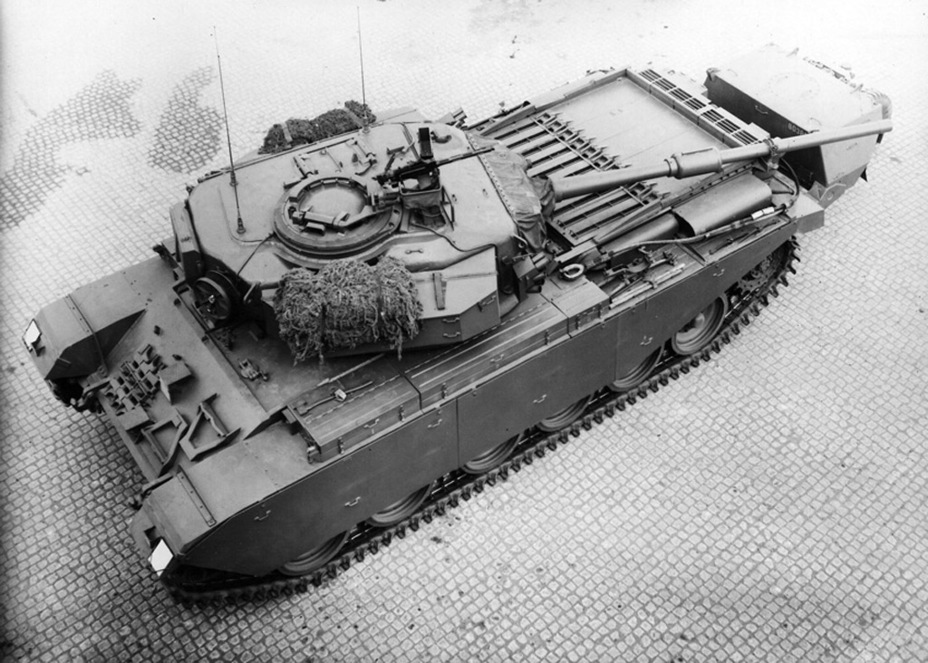
Since the L7 seemed much more promising than the 20-pounder, an idea was raised to rearm the Strv 81 with these guns. This was done in 1964-66. At the same time, the tanks received improved Ra 421 radios and new lights. The front armour was not improved. The tanks that were converted in this way were indexed Strv 102. In the latter half of the 1960s, the Swedish army possessed 350 modern Centurion tanks.
Half a century in the line of duty
Production of the Strv 103A finally began in 1967. The Swedish turretless tank was partially unified with the Centurion: it used road wheels from this tank. The appearance of the Strv 103 didn't mean that the 101 and 102 would retire. The Strv 103 was a very unusual fighting machine, and tanks with classical layouts seemed like superior options for certain tasks. In addition, the Swedes could still count, and the modernization of the Strv 81 did not come cheap. The British tanks could count on a long career in the Swedish army.
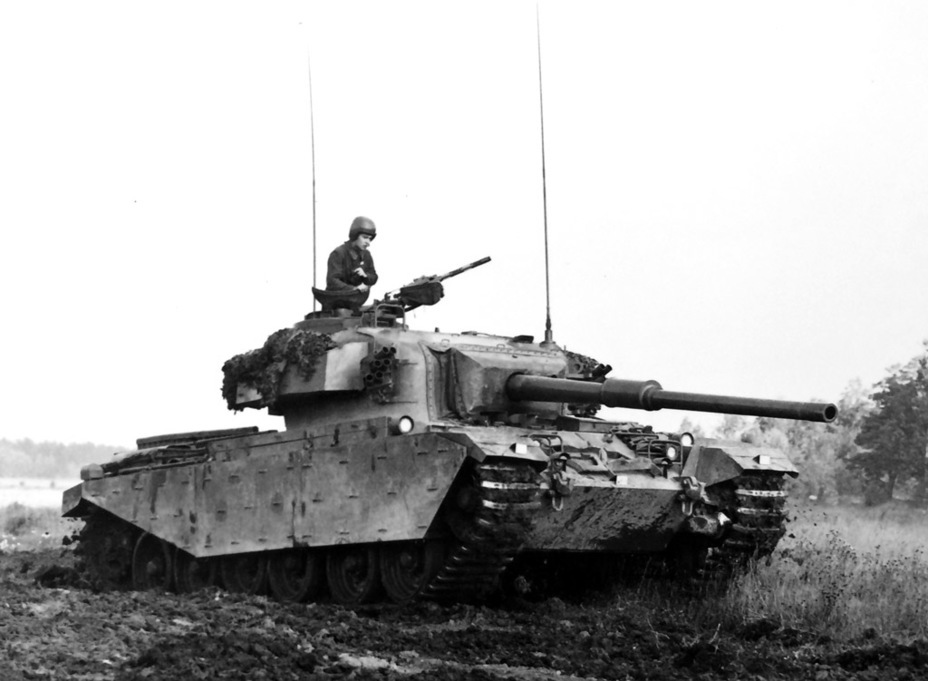
The next stage in the modernization of the Strv 102 began in 1973 and continued until 1977. An analogous program for the Strv 101 ended in 1983. Thanks to these modifications, the service time of these vehicles was radically increased.
Aside from modernizations, the tanks were subjected to various experiments. One of them was the creation of spaced armour designed in 1976. The armour consisted of chains, which hung from special rails. The designers expected this armour to protect the tanks from HEAT warheads. Work did not progress past the experimental stage, but a similar solution can be seen on Israeli Merkavas.
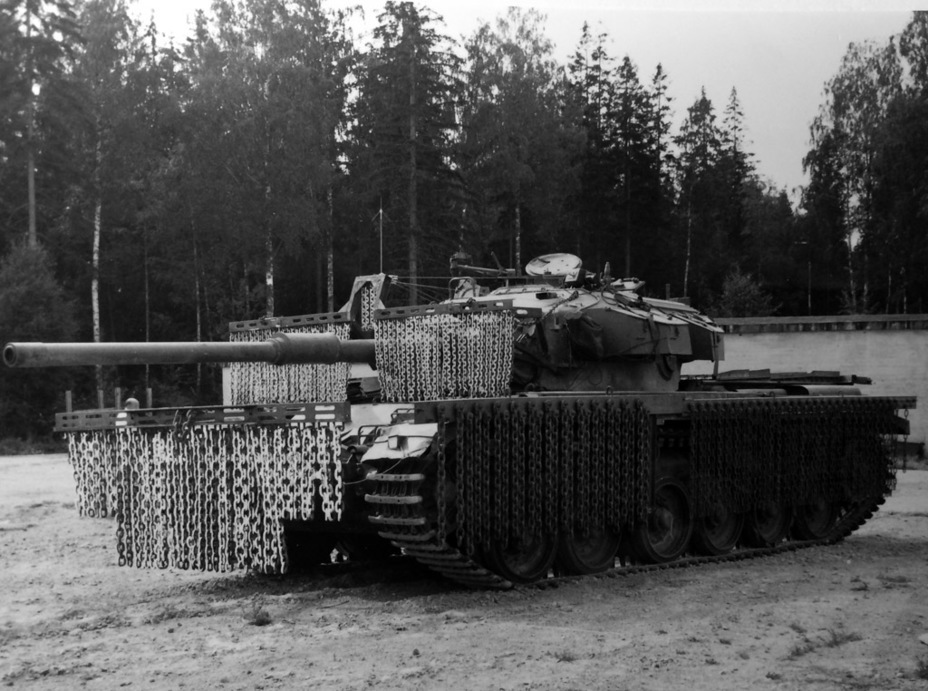
The Strv 101 and 102 were to be replaced by a tank designed as a part of the MBT 2000 program, but it did not progress past a full scale model. Meanwhile, Bofors performed the next modernization as a part of the torn-REMO program from 1983 to 1986. The resulting variants were indexed Strv 101R and 102R.
In addition to new electronics, the tanks changed externally. The lights were changed once more, and a pair of mortars was added to the roof. Finally, the tanks received reactive armour, similar to the kind developed by the Israeli Blazer company. These improvements increased the tanks' lifespan until 1995.
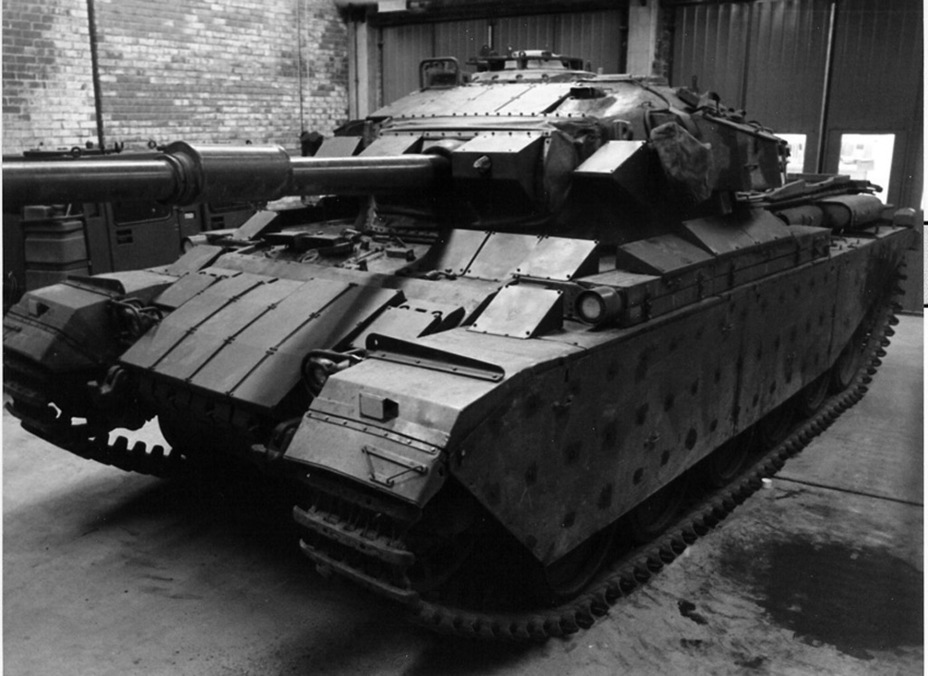
The most advanced variant of the Swedish Centurion was the Strv 104. Hägglunds & Söner AB modernized the tanks to this standard. The Swedes developed this variant after studying the modernization of Centurion tanks in other countries. For starters, the tanks received better reactive armour than the Strv 101R and 102R. The next step was the improvement of mobility. Hägglunds & Söner AB took the same road as Israel, and borrowed the engine and gearbox from the Americans. In this case, the donor tank was the M60. Thanks to this modification, the tank's top speed grew to a decent 48 kph.
The new engine and gearbox made a new engine deck necessary. It became very similar to the engine deck of the Israeli Centurion, known as the Sho't. The turret received new controls systems and a pair of mortars on the roof.
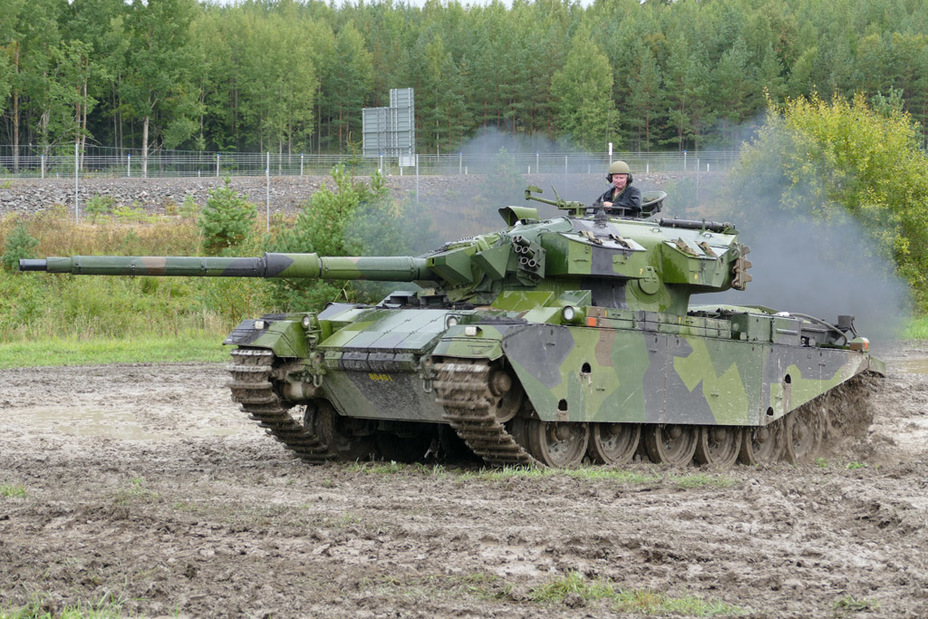
80 tanks were modernized to the Strv 104 standard from 1983 to 1987. They were issued to the P 6 (Kristianstad) and P 10 (Strängnäs) regiments. Later, these tanks ended up in P 18, which is quartered on Gotland island. This was the last unit to receive Centurion tanks.
In the 1990s, the Strv 101 and 102 were slowly phased out, replaced with the Strv 121 (Leopard 2). The Strv 105 modification was yet another attempt to breathe some life into these tanks, but only an experimental prototype was built. As for the Strv 104, they served until 2001, outliving even the Strv 103. The Swedish Centurion is not alone in this: these tanks served for a very long time in many countries, and are still in service somewhere.
Translated by Peter Samsonov. Read more interesting tank articles on his blog Tank Archives.
Sources:
- Materials from the archive of Karl Blomster;
- http://tanks.mod16.org;
- http://ftr.wot-news.com;
- http://www.ointres.se/pansar.htm







